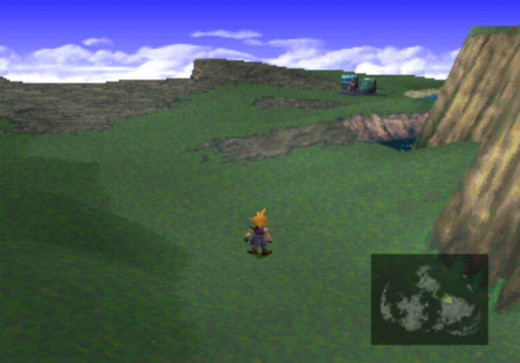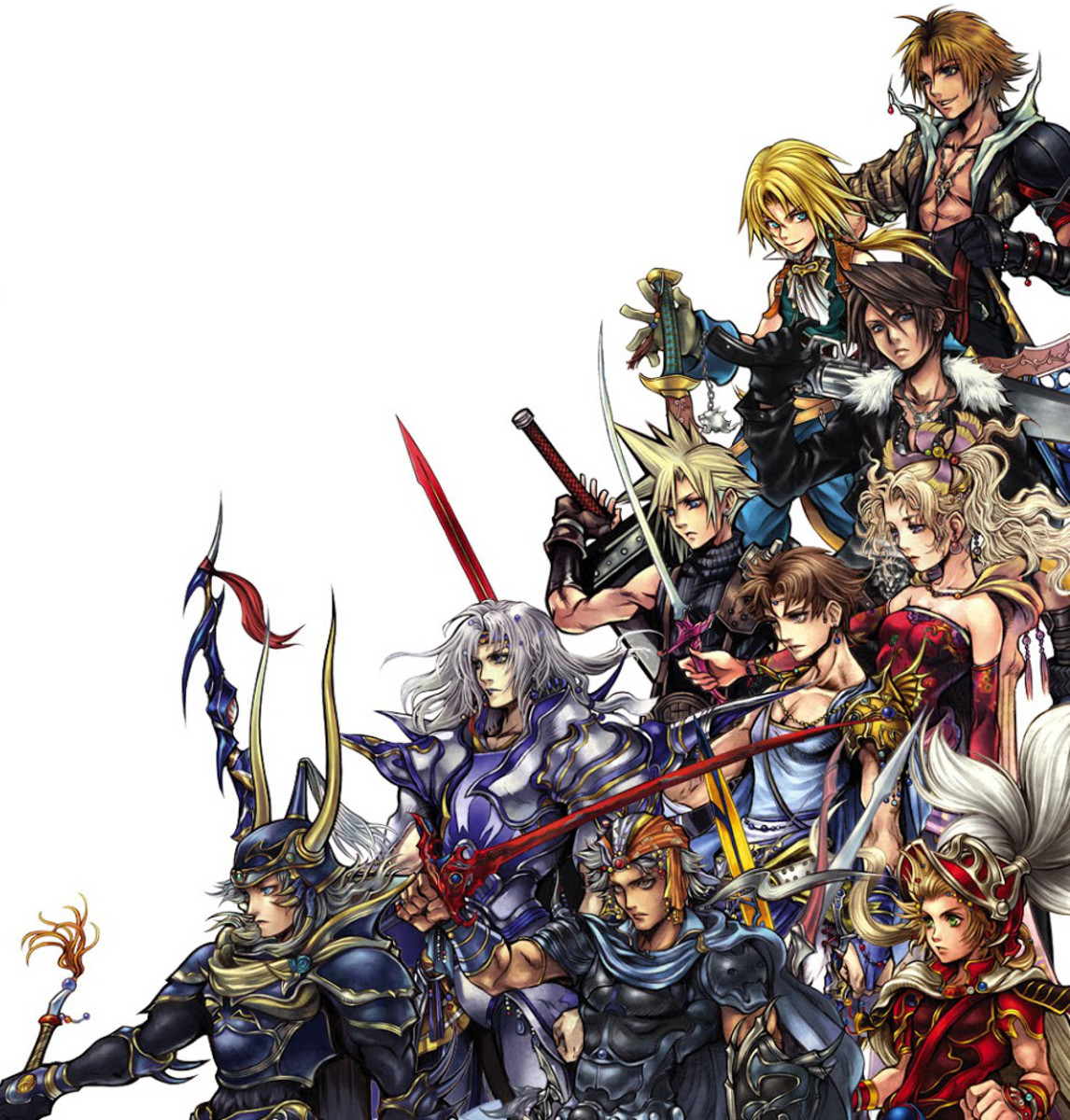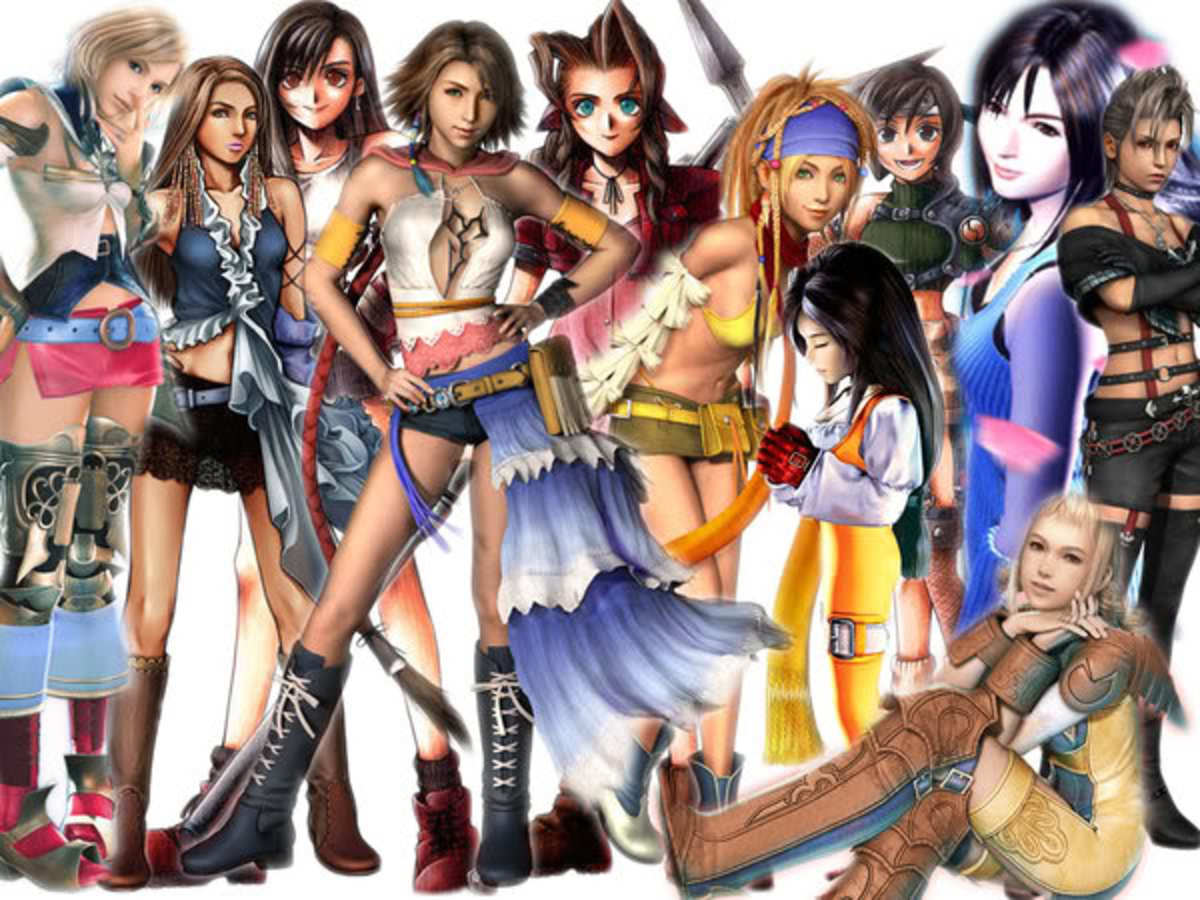- HubPages»
- Games, Toys, and Hobbies»
- Computer & Video Games»
- Roleplaying Video Games»
- Japanese Roleplaying Video Games
Review: Final Fantasy VII
Note: This is the seventh of a multi-part series featuring reviews of Final Fantasy games.

The Final Fantasy That Changed It All
Final Fantasy VII was notable for several reasons. For starters, it was the first Final Fantasy released by Squaresoft after their decision to start publishing games for the PlayStation platform instead of Nintendo's new console at the time, the Nintendo 64. This decision by Squaresoft was one that, in retrospect, really gave the PlayStation the winning edge during that five year period in the late 90s.
Its also the first Final Fantasy to utilize full-fledged 3D, including the use of computer-generated 3D cutscenes which, at the time, were all the rage. Commercials and advertising were created around these 3D cutscenes of Final Fantasy VII, creating a lot of hype and anticipation for the release even though the series only had three releases overseas to that point.
Upon its release, Final Fantasy VII became one of the most popular PlayStation games of its time, and perhaps even to this day remains one of the most popular Final Fantasy games of all time. For many, Final Fantasy VII was their first Final Fantasy, even their first Japanese RPG, and the nostalgia they carry for that game will always overcome any flaws the game would have. Japanese RPGs, by the way, saw a dramatic increase in sales and popularity overseas during the PlayStation era, and a lot of that is often believed to be the result of Final Fantasy VII's effect on the industry.
However, its now been 17 years since its release. There are people that are reading this article right now who weren't born when this game came out. Final Fantasy VII has definitely shown its graphical age especially given its an early PlayStation-era game. Still, visuals aren't everything, so the game's other merits must be considered to determine whether Final Fantasy VII remains a good game.

A New Perspective
Still, it would be best to start with the game's graphics, which at the time were unprecedented for the series. With the jump to the 3D-capable PlayStation, Final Fantasy VII jumped aboard the 3D wagon, implementing 3D battles, a 3D overworld, and 3D map sprites (though individual map screens were still 2D overlays that can be somewhat traversed in 3D.
However, perhaps being the first 3D game the development team had worked on, Final Fantasy VII's graphical models leave a lot to be desired. Cutscene and in-game models vary greatly, and while the cutscene models look like mid-90s anime manikins now, the in-game character models look like a jumble of a very small amount of polygons created to look like a series of Popeye knockoffs. The battle models for characters look a lot better in comparison, but a lot of enemy and boss designs are very basic with little on details and effects. I suppose you can say it gives the game its own sort of charm with its deformed models and their accompanying animations, but from a technical perspective it is definitely nowhere near impressive, and hasn't been for well over 10 years.

The Materia System
Final Fantasy VII introduces Materia, which is both an integral plot point but the key core of the game's battle system. For gameplay, materia is broken into several classes (green for magic, yellow for commands, red for summons, purple for augmentations, blue for added effects to other materia), which can then be attached to a character's equipped weapon and armor (the number of slots depends on the weapon/armor, each with a varying growth rate).
Some materia, notably the magic and summon materia, also boost a character's magic stats while diminishing their physical capabilities. As such, it can be considered wise to stuff one or two characters with magic and summons and map material on a third character differently so that he or she can deal extra damage with a weapon.
The game, like the three before it, utilizes the Active Time Battle system, including the conventions introduced in Final Fantasy VI such as pincer attacks and swapping between active commands. Final Fantasy VII, though, introduces full-fledged 'ultimate' attacks known as Limit Breaks (to be truthful, 'ultimate' attacks were also in Final Fantasy VI, but were not openly brought up, easy to activate or all that necessary in combat). Limit Breaks have a meter for each character that fills up as that character suffers damage, then once its full, the character's Attack command is replaced with "Limit", allowing them to do one of two attacks per Limit level (the 4th level has only one Limit, that character's best Limit Break).
This system basically makes every character the same save for their Limit Breaks, as you can make any character a magic, a summoner, a physical-heavy tank, a healer, or any combination of that and more. If you're forced to swap party members, you're able to move entire materia slot combinations from one character to another, and the new character will basically fight just like the old one.
Additionally, battles can sometimes drag in length mostly because, in an effort to display the game's 3D capabilities, Squaresoft game some enemies rather lengthy attack or transformation animations. Even longer are some of the game's summon animations, especially the animation length of the 'ultimate' summon (Knights of the Round). Other than these minor drawbacks, the level of customization you get with the various materia makes for a fun experience.
Final Fantasy VII (Steam) on Amazon
The New Final Fantasy Experience
Final Fantasy VII's soundtrack is mostly well done, with the Main Theme of Final Fantasy VII (the game's overworld theme for the first half) and its variations being some of the best music not just in this game but in the entire series. The sound effects are mostly fine, but nothing remarkable.
The game's plot goes in a few different directions. Working as a mercenary for an eco-terrorist group working within the massive industrial city Midgar, Cloud is separated from them following a botched mission, where he meets a flower girl, Aeris (or Aerith, the official name for her now). As Cloud reunites with the group, Aeris is captured and the group makes it a priority to storm the central tower of Midgar to get Aeris back. Its here that Cloud finds signs of his old supposed mentor, the believed-to-be-dead Sephiroth has returned and spends the next chunk of the game chasing after him while evading Midgar forces.
That doesn't sound too bad in itself, but the game starts taking the plot all over the place later on, especially with Cloud's character. The game has become famous for a certain character's death scene, but that's just a prelude to the craziness the game's plot offers afterwards. Overall, the plot isn't all that great, but I do enjoy a lot of the game's characters and dialogue. Going with a party that features Barret and Cid always makes for a good laugh.
Another thing new to the series is the inclusion of a large assortment of minigames. From a Road Rash-style motorcycle battle minigame, to a rather extensive chocobo racing game, to an arena battle, to a relaxing yet somewhat hard to control snowboarding game and even a submarine battle game, all of which can be played or replayed at the game's Golden Saucer. Most of these are fun to play and offer fun diversion from the main game.
Speaking of chocobos, the game features the most complex chocobo raising system in a single-player Final Fantasy, allow players to catch, breed and ride chocobos. If two chocobos are trained well enough, they can give birth to a blue (river-crossing) chocobo, a green (mountain-crossing) chocobo, then they can breed a black chocobo (river and mountain), which then can breed to make the gold chocobo (everything the others can do AND cross the ocean, required to get Knights of the Round). Chocobo breeding and racing makes for a rewarding sidequest in the game.
Where to Play Final Fantasy VII (Outside of Japan)
Name
| Platform
| Version
| Notes
|
|---|---|---|---|
Final Fantasy VII
| PlayStation
| Original
| Also on PSN
|
Final Fantasy VII
| PC (Windows)
| Original
| Original PC version from 1998
|
Final Fantasy VII
| PC (via Steam)
| Original
| Updated version for Steam released in 2013
|
Ratings
Rating
| |
|---|---|
Gameplay
| 4/5
|
Graphics (by PS1 standards)
| 2/5
|
Audio
| 5/5
|
Plot
| 3/5
|
Replayability
| 3/5
|
Challenge
| 2/5
|
Conclusion
Nowadays, Final Fantasy VII is often considered as overrated, and it was overrated. When it came out, for a short period of time everyone seemed to be in love with Final Fantasy VII - with its cutscenes, with its story, with its characters, with everything. However, now those graphics look completely dated, the storyline now seems fairly silly, and its characters the same, and the overall game is not looked upon as fondly by most, especially by those whose first Final Fantasy was a different game than VII.
It didn't help that Final Fantasy VII also received a standalone movie sequel (Advent Children, which was bad), a PS2 side-sequel (Dirge of Cerberus, which was bad) and a PSP prequel (Crisis Core, which was okay). All that exposure probably did the game more harm than good, especially since those three things gave the game a more serious, dark, even edgy vibe that the original game never possessed.
Honestly, the backlash the game now receives is also too much. Final Fantasy VII is still a good game. Visually, it has suffered by the passage of time, but most of the game's core mechanics are still sound, and with its soundtrack and plethora of enjoyable minigames there's still a lot of fun to be had with Final Fantasy VII. Ignoring the hype, ignoring the hate, ignoring everything related to it that's since come out, Final Fantasy VII is a worthwhile experience on its own and it remains one of the better Final Fantasy games in the series.

![Final Fantasy VII [Online Game Code]](https://m.media-amazon.com/images/I/31PJpHKkZiL._SL160_.jpg)


